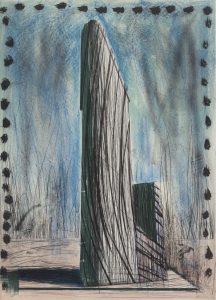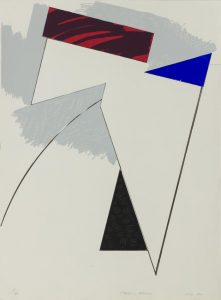Math in Art
The study of mathematics as a “demonstrative discipline” began in the sixth century B.C. with the Pythagoreans, who coined the term “mathematics” from the ancient Greek (máthēma), meaning “the subject of instruction.” Later, Islamic mathematicians developed and expanded the sphere and understanding of mathematics in the Islamic and Greek worlds and beyond.
Algebra means restoration or completion and is referred to as the union of broken parts and their unique relation-ships. In mathematics, it is a system that uses symbols and letters to help connect and has formal rules and finite results. (Webster’s New World Dictionary, 3rd Edition)
The source of the development of higher math may be debatable — Greece or the Arabian Peninsula — but the use of mathematical systems in the arts and culture of a society are most distinct in the Arab world and in Northern parts of Africa where textiles, ceramic facing on walls, decorations on architecture, and furniture reflect a strong cultural aesthetic.
Concepts of math are directly observable and visible in prominent aspects of our built environment — architecture, city planning, transportation, etc. Many visual artists rely heavily on mathematics in working out schemes for con- structing and/or deconstructing ideas into imagery.
While creativity is more intuitive, there are several elements and principles used in art that trace directly to concepts and systems found in math and most directly to higher math such as basic algebra and geometry.
The purpose of sharing the following models is to encourage teachers of higher math to explore Math in Art. Our intent is to make connections between math education and the art images in the Artura.org library and illustrate how creativity is often enabled by the use of math concepts. Art principles such as balance, movement, proportion, pattern, harmony, and unity can all be articulated using math concepts. In addition, line, shape, form, and space are all elements of art that can be manipulated — length, scale, and proportion — as part of a composition that is abstract and realistic.
The purpose of sharing the following images is to display connections between math and art — and are, therefore, instructive examples of Math in Art.
Related
Curriculum Connections
Suggested Topics for Algebra I and Geometry
Algebra I:
The resources provided can be used early on in an Algebra class to help students think in multiple dimen- sions. The artworks can be used to demonstrate illusions intended as a design element or to help students imagine space constructed or deconstructed from forms or shapes within a space. The ability to visualize concepts through art can make advanced math more accessible to students early on.
Geometry:
Some may want to use images in the Artura.org library to explore more complex uses of advanced math to create the illusions of space and solve spatial dynamic issues for three-dimensional works such as stand-alone sculpture and site-specific, public artworks. The laying of bricks or ceramic tiles is a skilled craft that can involve creativity and innovation in bricks or tiles are set and many available options in color, design, and texture are used. Sculptors such as Melvin Edwards, Richard Hunt, and John T. Scott have consistently used higher math concepts in the creation of large scale, space-defining public art.
Questions to Consider
- What are the different considerations between symmetry and asymmetry in relation to designing a structure or composing a work of art?
- What roles can rhythm, repetition, pattern, proportion, and scale play in an architect’s design and construction process? What roles can they plan in making a work of art?
- Other than the design of buildings, where else does one observe the use of the right angle in a creative way and for what purposes?









